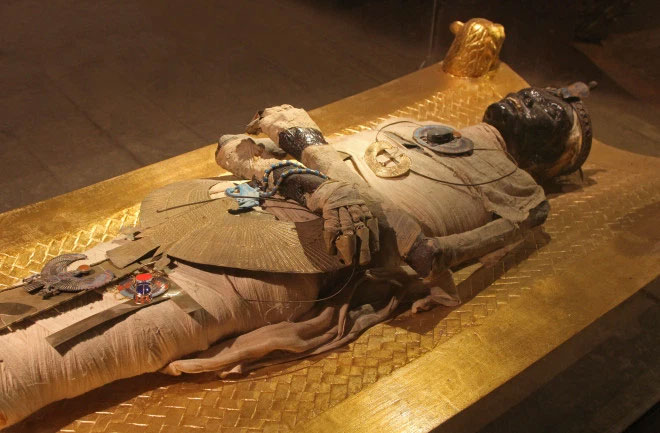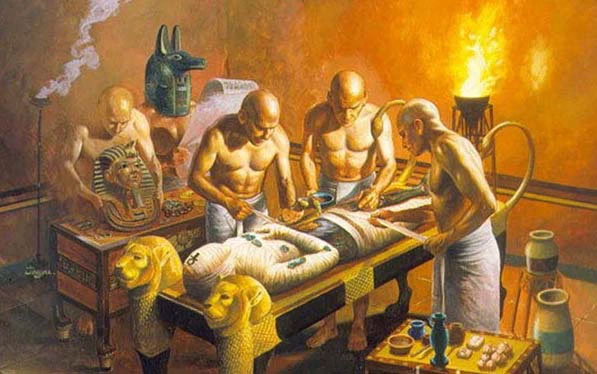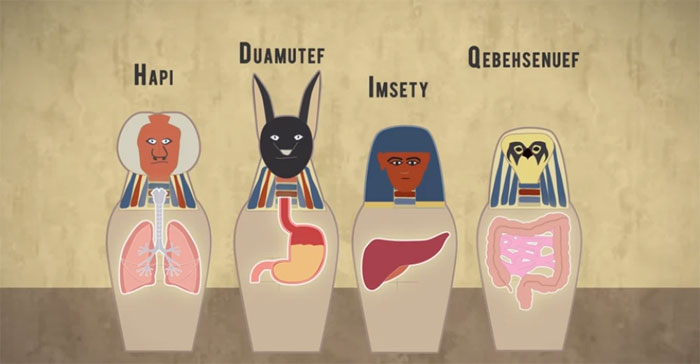The preservation of the deceased’s body has been a common practice since ancient times. However, perhaps the most well-known rituals belong to the ancient Egyptians. They preserved the bodies intact through a process known as mummification. In fact, the mummification techniques of ancient Egypt were so successful that over 3,000 years after their deaths, experts are still amazed by the images and information obtained from these mummies.
The ancient Egyptians believed in immortality. This belief drove them to plan early for their departure from this world.
Because the ancient Egyptians thought that death was merely a temporary state, life would continue after death, and their souls needed a physical body. As a result, they sought the best ways to preserve the body, considering it essential for continuing life.

The ancient Egyptians are considered masters of mummification. (Image: Shutterstock).
If the physical body was destroyed, the soul could be lost and unable to transition to the afterlife. This also explains why preparing a tomb was regarded as an important ritual in ancient Egyptian society. This process could begin long before a person passed away. Additionally, the ancient Egyptians prepared items that might be needed in the afterlife, including daily necessities, clothing, food, and valuable objects.
The Process of Mummification
The ancient Egyptians began mummification around 2600 BC. Initially, only Pharaohs were allowed to be mummified. However, this privilege gradually changed around 2000 BC when common people were also permitted to be mummified and prepare valuable items for their tombs.
A study published in 2011 on the materials used in ancient Egyptian mummification revealed that the process typically took 70 days. During this time, priests directly performed the mummification and conducted other rituals.
However, in reality, the techniques and quality of mummification in ancient Egypt varied significantly, depending on the individual’s status and wealth.
According to the Greek historian Herodotus, the ancient Egyptians had three different mummification methods corresponding to their status and wealth in society.
So, what are the differences among these three methods?
Ancient Egyptian Mummies: Differences from the First Steps!

In ancient Egypt, those of high status and wealth were subjected to the best mummification methods. (Image: Egypttoursportal).
The highest-ranking individuals in society received the best mummification methods after death. After being cleaned with water and salt, the priests (the ones performing the mummification) used a special hook to remove brain tissue through the deceased’s nostrils. They then performed an abdominal incision to remove the easily decayed internal organs. Only the heart was left behind, as the ancient Egyptians believed it was the key to guiding the deceased to the afterlife.
The internal organs, including the liver, lungs, intestines, and stomach, were preserved in four large jars filled with a type of salt known as natron. This salt could prevent the process of decay.

The liver, lungs, stomach, and intestines of the mummy are preserved in four large jars containing natron. (Image: Patreon)
Each jar had a lid carved with one of the four sons of Horus, the supreme god of ancient Egypt. Specifically, the god Hapi was responsible for protecting the lungs, the god Imsety protected the liver, the god Qebehsenuef protected the intestines, and the god Duamutef protected the stomach.
Next, the priests would place cinnamon, myrrh, and various herbs into the abdominal cavity, then sew it up, covering the body with natron salt for 70 days to prevent decay.
The body would shrink and dry out. Afterward, the priests used a type of resin to coat the body, additionally applying a mixture of wax containing cedar oil, and then wrapped the body in multiple layers of linen. They also created a special mask for the deceased and placed it on their head. Finally, the mummy was placed inside a series of nested wooden coffins, sometimes even using stone coffins.
Notably, the mummy would be buried with items they would need in the afterlife, including jewelry, furniture, clothing, and even pets.
This mummification method was very costly and involved many steps.
In contrast, the less expensive method for the middle class or the poor involved injecting pine oil into the abdomen to liquefy the internal organs. Following this, the body was mummified with natron salt for 70 days and then returned to the family.
Ancient Egyptian mummies have been remarkably well-preserved. Evidence shows that scientists can still conduct autopsies on mummies to determine the cause of death and even isolate DNA samples.
This has led to the ancient Egyptians being regarded as masters of mummification. Over thousands of years, these mummies have provided us with valuable information about this ancient civilization.


















































